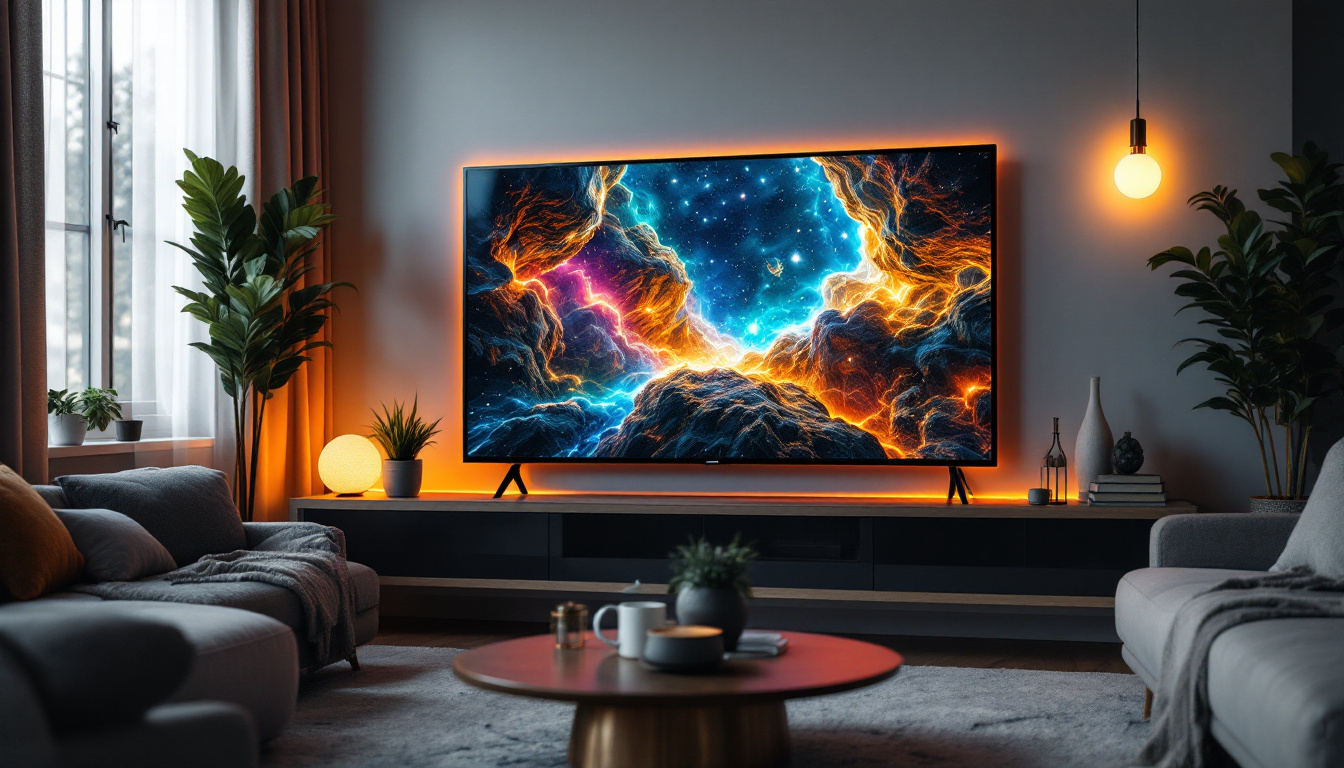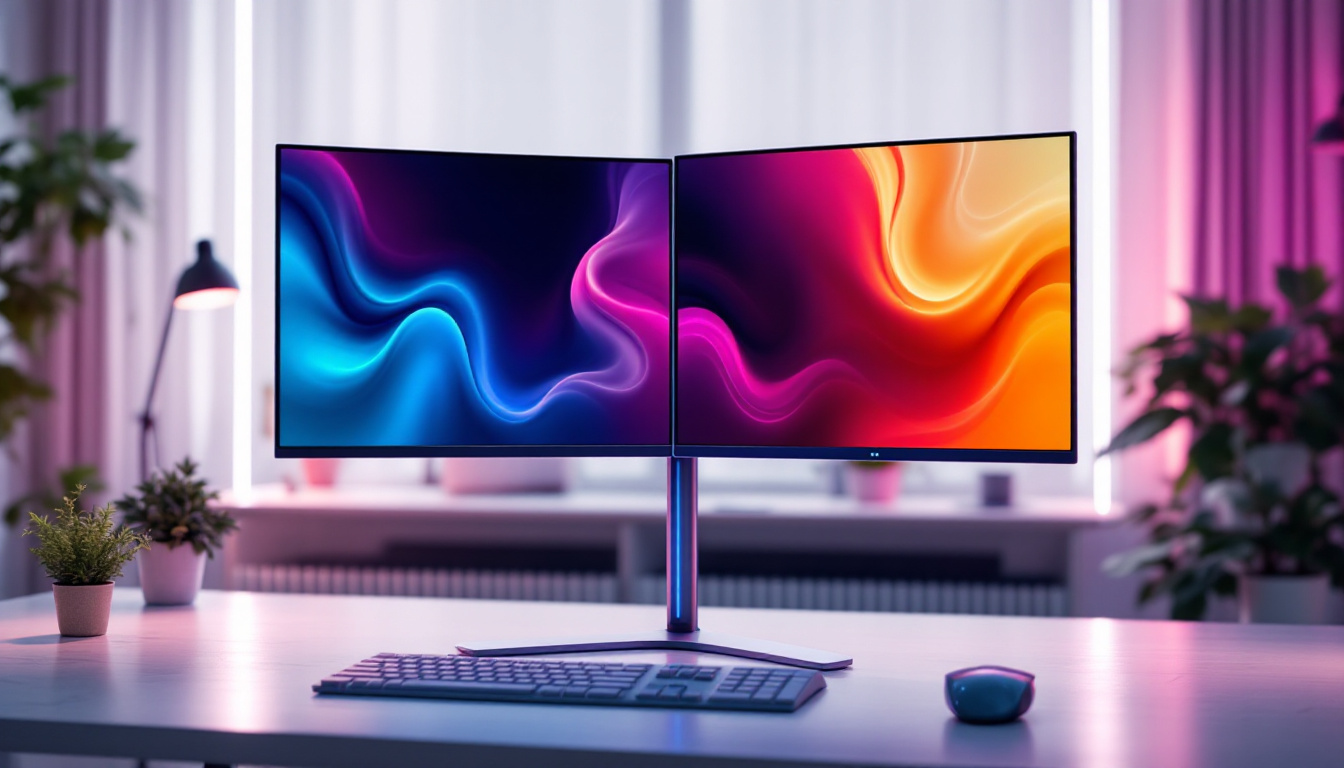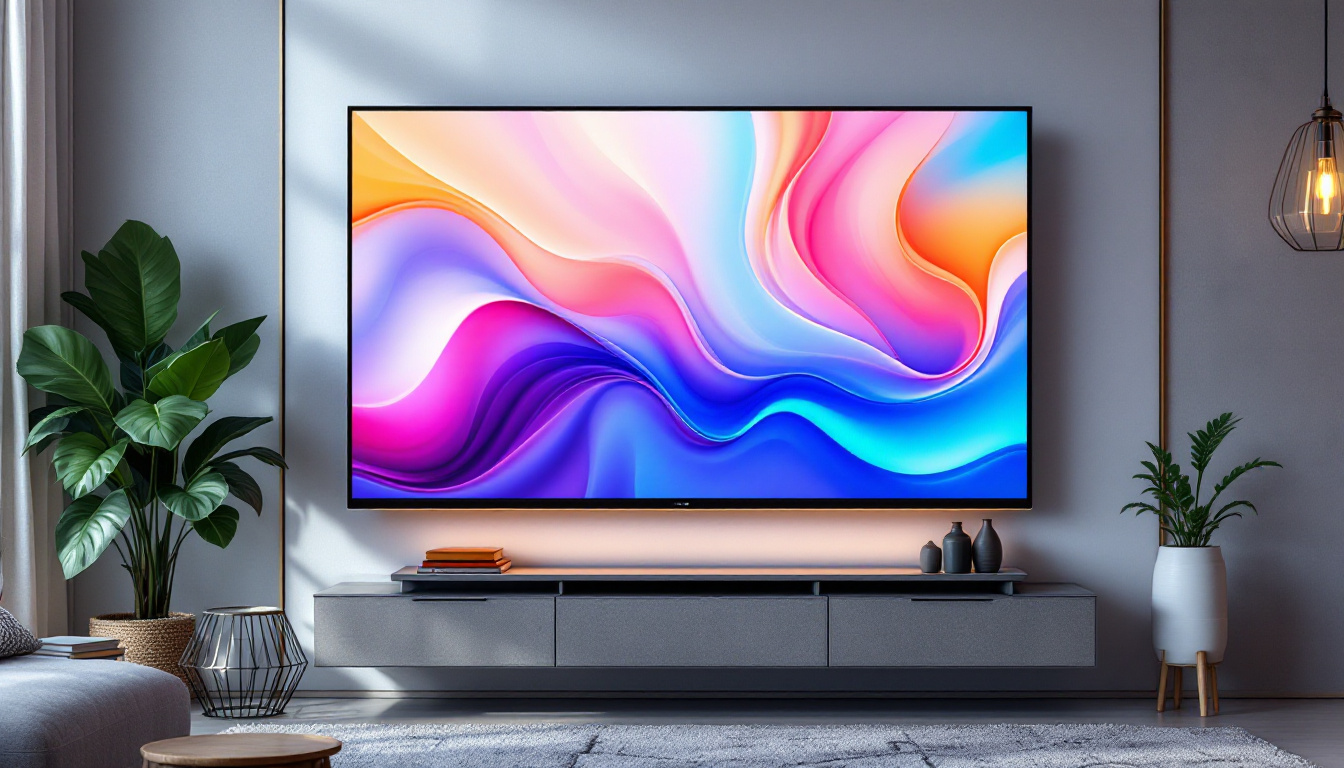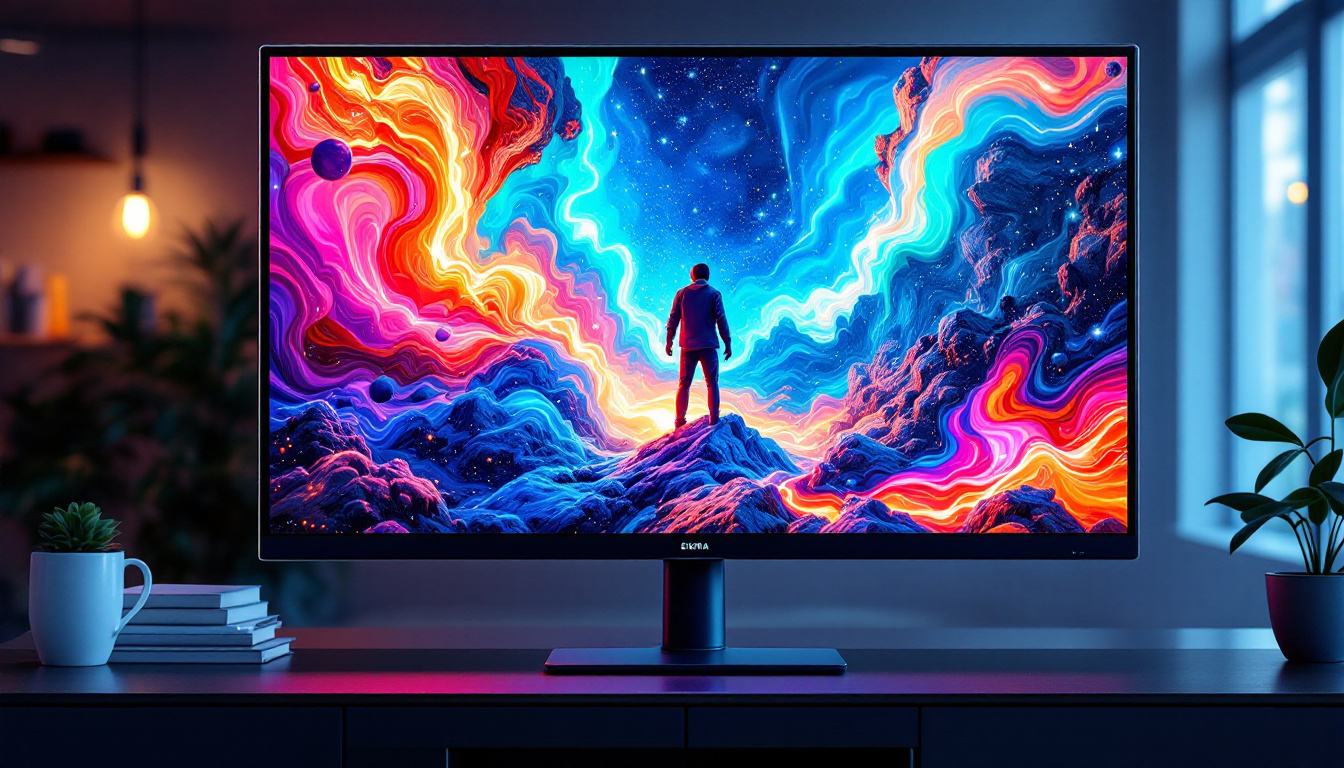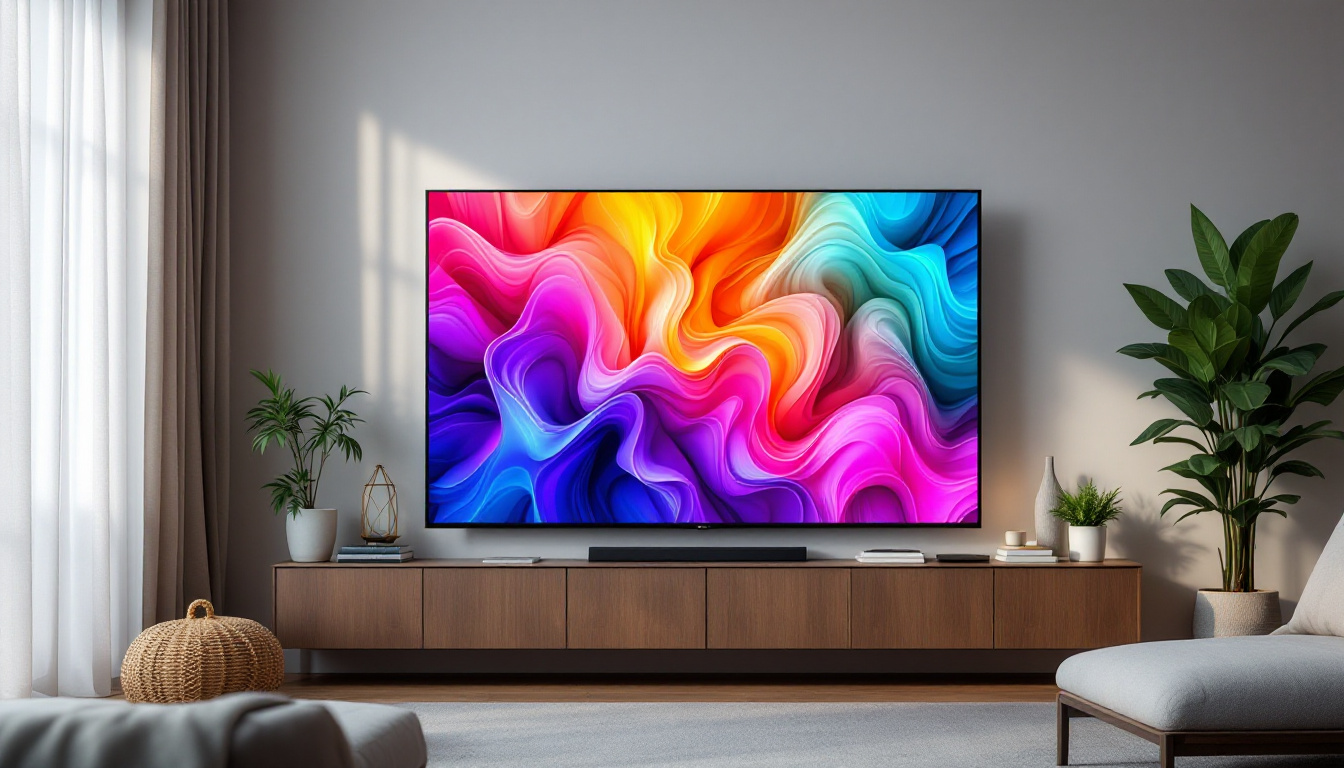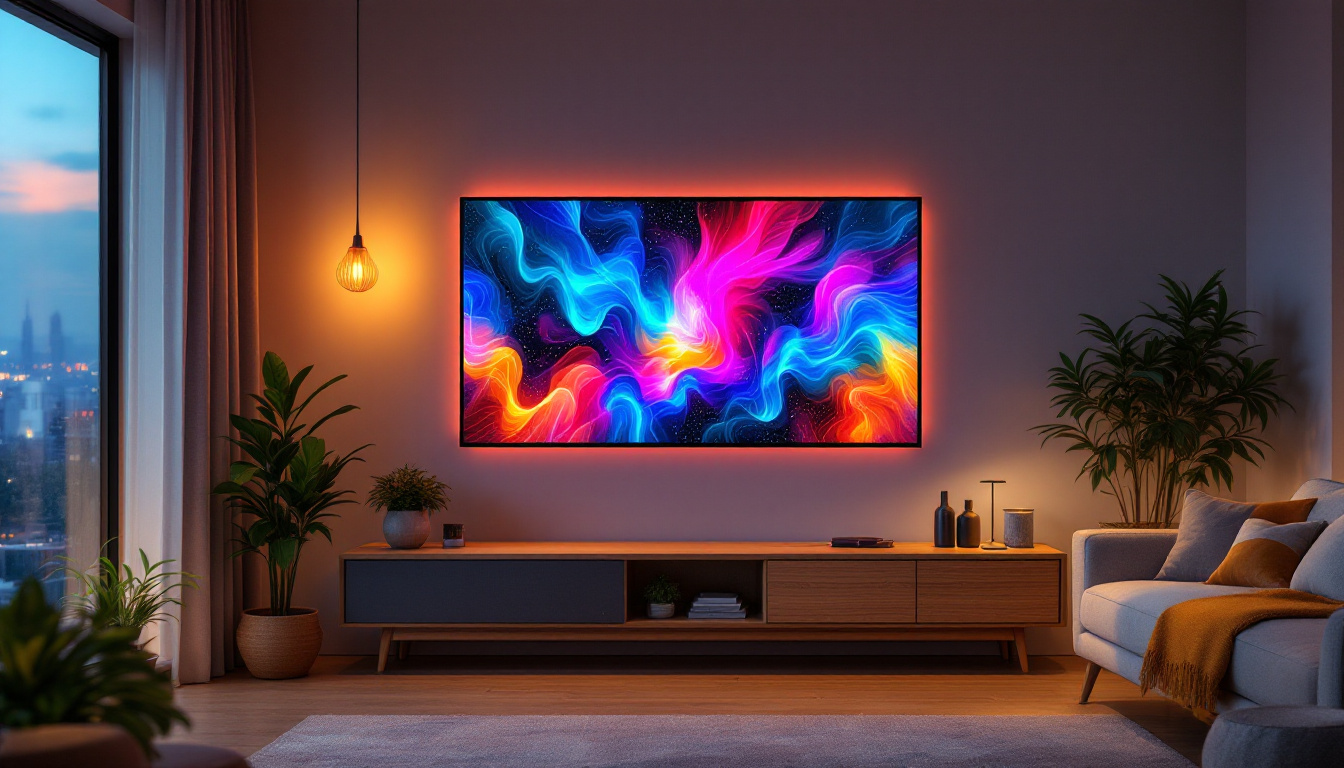Flat Panel TV LCD: LED Display Explained
In the world of modern television technology, flat panel TVs have become a staple in households around the globe. Among the various types of flat panel displays, LCD (Liquid Crystal Display) technology has gained immense popularity, particularly when combined with LED (Light Emitting Diode) backlighting. This article delves into the intricacies of flat panel LCD TVs with LED displays, exploring their technology, advantages, and factors to consider when purchasing one.
Understanding LCD Technology
LCD technology has revolutionized the way images are displayed on screens. Unlike older technologies such as CRT (Cathode Ray Tube), LCDs utilize liquid crystals sandwiched between two layers of glass. These crystals manipulate light to create images, resulting in a thinner, lighter, and more energy-efficient display. This transformation has not only improved the aesthetics of modern devices but has also paved the way for innovations in portable technology, allowing for the creation of sleek laptops, smartphones, and tablets that are both functional and visually appealing.
How LCD Works
The core of LCD technology lies in its ability to control light. When an electric current passes through the liquid crystals, they align in such a way that they either block or allow light to pass through. This process is facilitated by a backlight, which illuminates the screen from behind. Traditionally, this backlight was provided by fluorescent lamps, but the integration of LED technology has significantly enhanced performance. LEDs not only consume less power but also provide brighter and more vibrant colors, making them a popular choice in modern displays. Furthermore, advancements in local dimming technology allow for even greater contrast ratios, enhancing the viewing experience by producing deeper blacks and more vivid colors.
Types of LCD Panels
There are several types of LCD panels, each with distinct characteristics. The most common types include Twisted Nematic (TN), In-Plane Switching (IPS), and Vertical Alignment (VA). TN panels are known for their fast response times, making them ideal for gaming. IPS panels, on the other hand, offer superior color accuracy and wider viewing angles, while VA panels excel in contrast ratios. Understanding these differences can help consumers choose the right panel for their viewing preferences. Additionally, there are variations like Advanced Fringe Field Switching (AFFS) and Super In-Plane Switching (S-IPS), which further enhance the performance of IPS technology, providing even better color reproduction and viewing angles. As the demand for high-quality displays continues to grow, manufacturers are constantly innovating, leading to the development of hybrid technologies that combine the strengths of different panel types to cater to a wider range of applications, from professional graphic design to immersive gaming experiences.
The Role of LED Backlighting
LED backlighting has transformed the landscape of LCD TVs by providing brighter, more vibrant images compared to traditional fluorescent backlights. This advancement not only enhances picture quality but also allows for thinner designs and lower energy consumption. As a result, consumers are now able to enjoy a more immersive viewing experience, whether they’re watching movies, playing video games, or streaming their favorite shows. The shift to LED technology has also influenced the design of televisions, leading to sleeker, more aesthetically pleasing models that fit seamlessly into modern living spaces.
Types of LED Backlighting
There are primarily two types of LED backlighting used in LCD TVs: edge-lit and full-array. Edge-lit LED displays have LEDs placed along the edges of the screen, which helps to create a slim profile. However, this design can result in uneven lighting and less effective contrast. Full-array LED backlighting, on the other hand, features a grid of LEDs behind the entire screen, allowing for better control of brightness and contrast through local dimming. This means that in scenes with both bright and dark elements, full-array backlighting can adjust the light output in specific areas of the screen, enhancing the overall visual experience. Additionally, some advanced models incorporate mini-LED technology, which uses smaller LEDs to provide even finer control over lighting and contrast, pushing the boundaries of picture quality even further.
Benefits of LED Backlighting
The benefits of LED backlighting are numerous. Firstly, it offers improved energy efficiency, which is not only environmentally friendly but also cost-effective for consumers. Secondly, LED technology provides a wider color gamut, resulting in more vibrant and realistic images. This wider range of colors is particularly noticeable in high-definition content, where subtle differences in shades can significantly enhance the viewing experience. Lastly, the longevity of LED lights means that they typically outlast traditional fluorescent bulbs, reducing the need for replacements. Furthermore, LED backlighting contributes to faster response times, which is crucial for fast-paced action scenes in movies and sports broadcasts. This responsiveness reduces motion blur, allowing viewers to enjoy crisp, clear images even during rapid movements. As technology continues to evolve, we can expect further innovations in LED backlighting that will enhance our visual experiences even more.
Advantages of Flat Panel LCD TVs
Flat panel LCD TVs with LED displays bring a multitude of advantages to the table, making them a popular choice for consumers. Understanding these benefits can aid in making an informed purchasing decision.
Picture Quality
One of the most significant advantages of LCD TVs with LED backlighting is their exceptional picture quality. The combination of liquid crystals and LED technology allows for brighter images, deeper blacks, and a broader color spectrum. This results in a viewing experience that is both immersive and enjoyable, whether watching movies, playing video games, or enjoying sports.
Thin and Lightweight Design
Flat panel LCD TVs are notably thinner and lighter than their CRT counterparts. This design not only makes them aesthetically pleasing but also easier to mount on walls or place in various spaces within a home. The sleek profile of these TVs allows for more flexibility in interior design, enabling consumers to create a modern and uncluttered look.
Energy Efficiency
energy efficiency is a crucial consideration for many consumers today. LCD TVs with LED backlighting consume significantly less power compared to older technologies. This not only contributes to lower electricity bills but also aligns with a growing awareness of environmental sustainability. Many models also come with energy-saving features that further reduce power consumption.
Factors to Consider When Purchasing a Flat Panel LCD TV
When in the market for a flat panel LCD TV, several factors should be taken into account to ensure the best purchase decision. Understanding these elements can help consumers choose a model that best fits their needs.
Screen Size
Screen size is one of the most important factors to consider. It is essential to choose a size that fits the viewing area and meets personal preferences. A larger screen can enhance the viewing experience, especially for movies and sports, but it is crucial to ensure that the TV fits comfortably in the designated space without overwhelming the room.
Resolution
Resolution plays a vital role in picture quality. Modern LCD TVs typically come in various resolutions, including Full HD (1080p), 4K (2160p), and even 8K (4320p). Higher resolutions provide more detail and clarity, making them ideal for larger screens. Consumers should consider their viewing habits and the type of content they typically watch when selecting a resolution.
Smart Features
In today’s digital age, smart features have become increasingly important. Many flat panel LCD TVs come equipped with built-in streaming services, voice control, and internet connectivity. These features enable users to access a wide range of content directly from their TVs, enhancing the overall viewing experience. When purchasing a TV, it is essential to evaluate the smart capabilities and ensure they align with personal preferences.
Comparing LCD with Other Technologies
While flat panel LCD TVs with LED displays are popular, it is essential to compare them with other technologies, such as OLED (Organic Light Emitting Diode) and QLED (Quantum Dot LED), to understand their unique advantages and disadvantages.
OLED Technology
OLED technology offers several benefits over traditional LCD displays. Each pixel in an OLED screen emits its light, allowing for perfect blacks and exceptional contrast ratios. This results in stunning visuals that are particularly appealing for movie enthusiasts. However, OLEDs can be more expensive and may suffer from burn-in issues over time, which can be a concern for some users.
QLED Technology
QLED is a technology developed by certain manufacturers that enhances LCD displays with quantum dot technology. This results in brighter images and a wider color spectrum compared to standard LCDs. QLEDs are known for their vibrant colors and high brightness levels, making them suitable for well-lit environments. However, they may not achieve the same level of black depth as OLEDs.
Maintaining Your Flat Panel LCD TV
To ensure longevity and optimal performance, proper maintenance of a flat panel LCD TV is crucial. Simple care routines can significantly enhance the viewing experience and extend the life of the television.
Cleaning the Screen
Regular cleaning of the screen is essential to maintain picture quality. It is recommended to use a microfiber cloth and a gentle cleaning solution specifically designed for electronics. Avoid using harsh chemicals or abrasive materials, as these can damage the screen’s surface. A clean screen not only improves visibility but also enhances the overall aesthetic of the TV.
Optimal Placement
Placement of the TV can impact viewing quality and longevity. It is advisable to position the TV away from direct sunlight to prevent glare and overheating. Additionally, ensuring proper ventilation around the TV can help avoid overheating, which can affect performance. Using a wall mount or stand that allows for adjustable viewing angles can also enhance the overall experience.
Conclusion
Flat panel LCD TVs with LED displays represent a significant advancement in television technology, offering an array of benefits including superior picture quality, energy efficiency, and sleek designs. By understanding the technology behind these displays, the advantages they provide, and the factors to consider when purchasing, consumers can make informed decisions that enhance their viewing experience. As technology continues to evolve, flat panel LCD TVs remain a popular choice for those seeking a balance of performance and value.
Discover the Future of Visual Display with LumenMatrix
Ready to elevate your viewing experience with cutting-edge LED display technology? Look no further than LumenMatrix, a pioneer in the industry committed to revolutionizing visual communication. From immersive Indoor LED Wall Displays to dynamic Outdoor LED Wall Displays, and from versatile Vehicle LED Displays to innovative Custom LED Solutions, LumenMatrix offers a wide range of products designed to captivate and engage. Whether you’re looking to enhance your brand’s visibility or create unforgettable visual experiences, our LED display modules are tailored to meet your needs. Check out LumenMatrix LED Display Solutions today and step into a world where clarity and impact go hand in hand.

